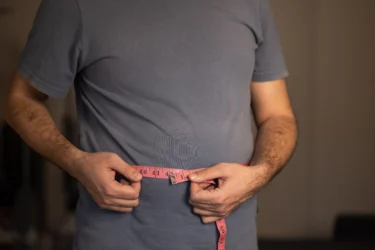Benefits of Matsyasana (Fish Pose) and How to Do it By Dr. Ankit Sankhe
By Dr. Ankit Sankhe +2 more

Get,

to manage your symptom
Get your,


4 Cr+ families
benefitted

OTP sent to 9988776655



You’ve successfully subscribed to receive
doctor-approved tips on
Whatsapp

Get ready to feel your best.

Hi There,
Download the PharmEasy App now!!


Register to Avail the Offer
Send OTPBy continuing, you agree with our Privacy Policy and Terms and Conditions

Hi There,
Sign up on PharmEasy now!!
Trusted by 4 crore+ families

OTP sent to 9988776655



You have unlocked 25% off on medicines




Code: NU25
By Dr. Ankit Sankhe +2 more
Table of Contents
Yoga has been around for ages. It is only in recent years that interest in it has been renewed. The ease of exercise that Yoga offers is the reason for this new-found interest not only because of the holistic benefits of Yoga alone.
Practicing yoga does not require heavy expensive equipment nor does it require a specialized space (like a gym). It can be done at home, in comfortable clothes, with only a mat. What makes yoga even more attractive is the adaptability that it offers to a beginner. Practically, any yoga pose can be modified to suit a beginner.

Matsyasana is one such interesting yoga asana that can be done in the comfort of your home, with only a yoga mat.
Matsyasana is a popular yogic asana. In the word ‘Matsyasana’, Matsya means Fish in Sanskrit. It is named so since the final posture that the body assumes in this asana resembles a fish. Hence Matsyasana is also called a Fish pose1.
Yoga asanas, when done properly using the proper techniques in a systematic matter, not only help in obtaining the maximum health benefit but also help in reducing the incidence of any injury.
The steps to do Matsyasana are as follows:
Matsyasana has an interesting story attached to it, which makes for an enjoyable read.
Based on what I have observed over the years, practising Matsyasana can bring about various physical benefits for your body. This yoga pose involves stretching and opening the rib cage, hips, and abdominal cavity, which might lead to increased flexibility and improved range of motion7.
Dr. Rajeev Singh, BAMS
The potential benefits of Matsyasana are as follows:

Diabetes is a complex condition mainly presenting as excess glucose in the blood and urine, as the hormone insulin, needed to metabolize sugar is deficient. It needs to be managed with an integrative treatment approach using exercise, medicines and diet. An inverted pose like Matsyasana may help stimulate the pancreas helping in insulin release and eventually in controlling the rising blood and urinary sugar levels. It may also help improve the blood circulation to the pancreas2.

Gynaecomastia is the medical term for the unusual development of one or both breasts in males. Though commonly seen in men who are overweight at puberty, it can also occur in older overweight men. It can be caused due to hormonal changes or the intake of medicines containing estrogen (the female hormone). Matsyasana may help in reducing the amount of fat in the chest region which may make it appear leaner. It may also help reduce cholesterol deposits in the chest region and overall weight loss5.

Dysmenorrhoea means painful periods without any underlying pathological cause. Primary dysmenorrhoea or menstrual cramps begin when the periods start with the pain usually occurring in the lower abdomen and radiating to the upper part of the thighs and the lower back. It may also be associated with loose motions, nausea, headache, and stress. Practising Matsyasana regularly may improve the flexibility and strength of the back and the pelvic muscle floor, thus benefitting the management of primary dysmenorrhoea6.
I have observed that practising Matsyasana might help in coping with stress and anxiety. This yoga pose involves deep breathing and gentle stretching, which can have a calming effect on the mind and body. It is believed that the stretching of the chest and opening of the heart area in Matsyasana stimulates the relaxation response and helps to release tension, promoting a sense of peace and relaxation7.
Dr. Siddharth Gupta, B.A.M.S, M.D (Ayu)

Obesity means having excess body fat and is not limited to being overweight. The incidence of obesity is rising rapidly due to incorrect dietary habits and lack of exercise. Matsyasana is a pose that may help combat obesity. Practising Matsyasana regularly may help reduce fat deposits in the thighs and belly as it involves stretching of the abdominal and inner thigh muscles.

Though practicing yoga is beneficial for the mind as well as the soul, it should not be resorted to as the sole treatment option for any medical condition. If you are suffering from any health issues, you must consult a qualified medical practitioner who can assess, examine, and treat you appropriately. Also, it is necessary to practice any form of Yoga under the guidance of a trained yoga expert to prevent any sort of injuries.
Also Read: Benefits of Savasana (Corpse Pose) and How to Do it By Dr. Ankit Sankhe
There are some risks related to practising Matsyasana and one must take adequate precautions in certain situations:
Under the supervision of a qualified and experienced yoga teacher, who can understand your risk factors, you may practice Matsyasana with the necessary precautions.
Also Read: Benefits of Mandukasana (Frog Pose) and How to Do it By Dr. Himani Bisht
Matsyasana or fish pose is an asana that has many benefits for the pelvic region, excess body fat, spine, respiratory organs, painful periods, and pancreas. It is also said to bring about a sense of harmony and balance in those who feel out of balance. To avail maximum health benefit of this asana, it is advisable to practice it under the guidance of a trained Yoga teacher who can assess and advise you regarding the proper technique of practicing without any injuries.
Also Read: Benefits of Ardha Matsyendrasana (Half Fish Pose) and How to Do it By Dr. Himani Bisht
While Matsyasana is said to be useful for uterine issues and sexual dysfunctions in females, there is not enough scientific evidence to declare Matsyasana to be safe during pregnancy.
Matsyasana should be practiced under the supervision of a trained and experienced Yoga professional who can guide you regarding the number of times it may be done during the day.
Practicing Matsyasana regularly may help in reducing fatty deposits in the belly as well as the thighs since the final pose stretches the abdominal and inner thigh muscles.
The final pose in Matsyasana is advised to be held for 10-15 seconds2. However, if you are doing Matsyasana for the first time, it is advisable to hold this pose for as long as you are comfortable.
Disclaimer: The information provided here is for educational/awareness purposes only and is not intended to be a substitute for medical treatment by a healthcare professional and should not be relied upon to diagnose or treat any medical condition. The reader should consult a registered medical practitioner to determine the appropriateness of the information and before consuming any medication. PharmEasy does not provide any guarantee or warranty (express or implied) regarding the accuracy, adequacy, completeness, legality, reliability or usefulness of the information; and disclaims any liability arising thereof.
Links and product recommendations in the information provided here are advertisements of third-party products available on the website. PharmEasy does not make any representation on the accuracy or suitability of such products/services. Advertisements do not influence the editorial decisions or content. The information in this blog is subject to change without notice. The authors and administrators reserve the right to modify, add, or remove content without notification. It is your responsibility to review this disclaimer regularly for any changes.
Comments

Leave your comment...
You may also like
Comments